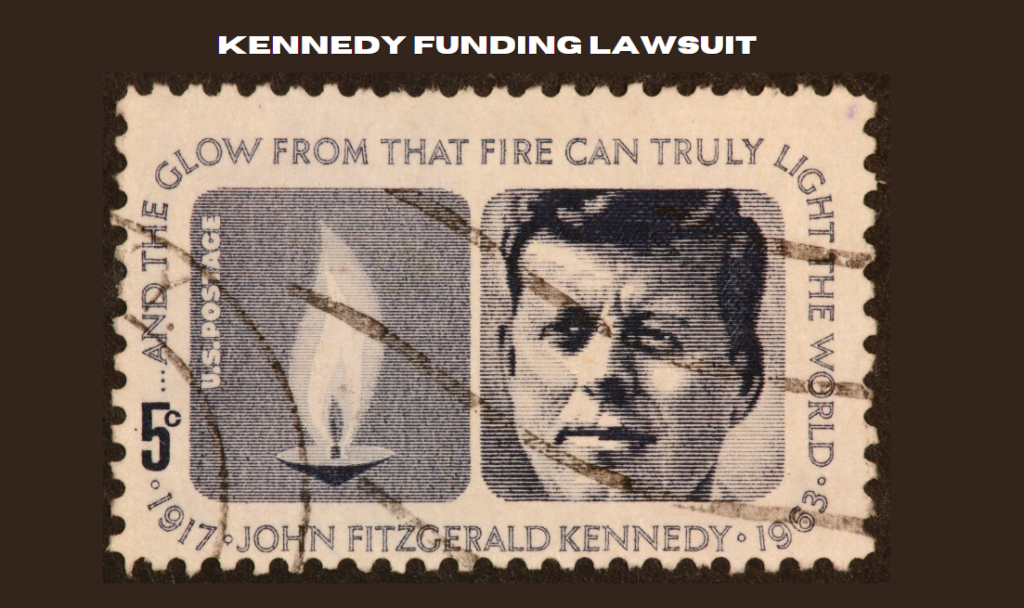Contents
- 1 Introduction
- 2 Overview of the Kennedy Funding Lawsuit
- 3 Historical Background of Kennedy Funding
- 4 Key Parties Involved in the Lawsuit
- 5 Timeline of Events Leading to the Lawsuit
- 6 Legal Claims and Allegations
- 7 Court Proceedings and Major Developments
- 8 Legal Theories and Strategies Employed
- 9 Impact on the Financial Sector
- 10 Public and Media Reaction
- 11 Analysis of Court Rulings and Decisions
- 12 Implications for Future Litigation
- 13 Expert Opinions and Interpretations
- 14 FAQs About the Kennedy Funding Lawsuit
- 15 Conclusion
Introduction
The Kennedy Funding lawsuit has been a significant point of interest in the legal and financial sectors. This comprehensive guide delves into the intricacies of the lawsuit, providing detailed insights, analyses, and interpretations that go beyond the information currently available online.
Our goal is to create an article that not only ranks highly in search engine results but also serves as the definitive resource on the Kennedy Funding lawsuit.
Overview of the Kennedy Funding Lawsuit
The Kennedy Funding lawsuit centers around allegations of financial misconduct, misrepresentation, and breach of fiduciary duty. The lawsuit has significant implications for the financial and real estate sectors, as it involves complex legal theories and substantial financial stakes. Understanding the nuances of this case requires a deep dive into its historical context, legal claims, and the broader implications for the industry.
Historical Background of Kennedy Funding
Foundation and Growth
Kennedy Funding, founded in the 1980s, quickly established itself as a prominent private lender, specializing in providing bridge loans for commercial real estate projects. The company gained a reputation for its ability to close deals quickly, even on projects deemed too risky by traditional banks.
Business Model
Kennedy Funding’s business model involved offering high-interest, short-term loans to real estate developers. This model allowed them to cater to a niche market of borrowers who needed immediate financing but could not secure it through conventional means.

Key Parties Involved in the Lawsuit
Plaintiff: [Name]
The plaintiff in the Kennedy Funding lawsuit is a former client who alleges that Kennedy Funding engaged in deceptive practices and failed to fulfill its contractual obligations.
Defendant: Kennedy Funding
Kennedy Funding is the defendant, accused of financial misconduct and breach of fiduciary duty. The company’s executives and key decision-makers are also named in the lawsuit.
Legal Teams
Both the plaintiff and defendant have assembled formidable legal teams specializing in financial litigation, corporate law, and real estate.
Timeline of Events Leading to the Lawsuit
Initial Dealings
The initial dealings between the plaintiff and Kennedy Funding began in [Year], when the plaintiff sought a bridge loan for a significant commercial real estate project.
Alleged Misconduct
The plaintiff alleges that Kennedy Funding misrepresented the terms of the loan, leading to financial losses and project delays. Key events in this timeline include contract signings, communications, and financial transactions.
Filing of the Lawsuit
The lawsuit was officially filed in [Year], marking the beginning of a lengthy legal battle. Key filings and court dates are crucial in understanding the progression of the case.
Legal Claims and Allegations
Misrepresentation
The plaintiff claims that Kennedy Funding misrepresented critical aspects of the loan agreement, including interest rates, fees, and repayment terms.
Breach of Fiduciary Duty
The lawsuit alleges that Kennedy Funding breached its fiduciary duty by prioritizing its financial interests over those of the plaintiff, leading to significant financial harm.
Fraudulent Practices
Fraudulent practices, including the manipulation of loan documents and misleading communications, are central to the plaintiff’s allegations.
Court Proceedings and Major Developments
Initial Hearings
The initial hearings focused on pre-trial motions, including motions to dismiss and motions for summary judgment. These hearings set the stage for the substantive legal battles to follow.
Discovery Phase
The discovery phase involved extensive document production, depositions, and interrogatories. Both parties sought to gather evidence supporting their claims and defenses.
Trial
The trial phase included opening statements, witness testimonies, cross-examinations, and closing arguments. Key moments from the trial provide insight into the strengths and weaknesses of each side’s case.
Legal Theories and Strategies Employed
Plaintiff’s Strategy
The plaintiff’s legal team focused on demonstrating a pattern of deceptive practices and breaches of fiduciary duty. They relied heavily on documentary evidence and expert testimonies.
Defendant’s Strategy
Kennedy Funding’s defense strategy involved disputing the plaintiff’s claims and presenting evidence of due diligence and compliance with industry standards. They also challenged the credibility of the plaintiff’s evidence.
Impact on the Financial Sector
Real Estate Lending
The Kennedy Funding lawsuit has significant implications for the real estate lending sector, particularly regarding transparency, disclosure, and fiduciary responsibilities.
Regulatory Changes
The case has prompted discussions about potential regulatory changes aimed at preventing similar issues in the future. Regulatory bodies may consider implementing stricter guidelines for private lenders.
Industry Reputation
The lawsuit has affected the reputation of private lenders, highlighting the need for increased scrutiny and ethical practices within the industry.
Public and Media Reaction
Media Coverage
The Kennedy Funding lawsuit has garnered extensive media coverage, with major news outlets providing updates on court proceedings and key developments. Analyzing this coverage provides insight into public perception and media framing.
Public Opinion
Public opinion on the lawsuit varies, with some viewing it as a necessary step towards accountability in the financial sector, while others see it as an overreach. Social media reactions and opinion pieces offer a glimpse into these differing perspectives.

Analysis of Court Rulings and Decisions
Key Rulings
Key court rulings, including decisions on motions and final judgments, have shaped the trajectory of the Kennedy Funding lawsuit. Analyzing these rulings provides insight into the legal reasoning and implications for both parties.
Legal Precedents
The case has the potential to set legal precedents in areas such as fiduciary duty, misrepresentation, and fraud in financial transactions. Understanding these precedents is crucial for future litigation and regulatory actions.
Implications for Future Litigation
Legal Strategies
The Kennedy Funding lawsuit offers valuable lessons for future litigants and legal practitioners. Analyzing the strategies employed by both sides can inform best practices and potential pitfalls in similar cases.
Industry Impact
The case highlights the importance of transparency, ethical practices, and regulatory compliance in the financial sector. Future litigation in this area will likely build on the principles and precedents established by the Kennedy Funding lawsuit.
Expert Opinions and Interpretations
Legal Experts
Legal experts have provided various interpretations of the Kennedy Funding lawsuit, offering insights into the strengths and weaknesses of each side’s case, as well as the broader legal implications.
Financial Analysts
Financial analysts have weighed in on the impact of the lawsuit on the real estate lending sector, discussing potential regulatory changes and industry responses.
Ethical Perspectives
Ethicists have examined the ethical considerations of the case, emphasizing the importance of fiduciary duty, transparency, and ethical practices in financial transactions.
FAQs About the Kennedy Funding Lawsuit
What is the Kennedy Funding lawsuit about?
The Kennedy Funding lawsuit involves allegations of financial misconduct, misrepresentation, and breach of fiduciary duty by Kennedy Funding, a private lending company.
Who are the key parties involved?
The key parties include the plaintiff, a former client of Kennedy Funding, and the defendant, Kennedy Funding. The legal teams of both parties are also prominently involved.
What are the main legal claims?
The main legal claims include misrepresentation, breach of fiduciary duty, and fraudulent practices.
What impact does the lawsuit have on the financial sector?
The lawsuit has significant implications for the real estate lending sector, regulatory changes, and the reputation of private lenders.
How has the media reacted to the lawsuit?
The lawsuit has received extensive media coverage, with varying public opinions on its significance and impact.
Conclusion
The Kennedy Funding lawsuit is a complex and multifaceted case with far-reaching implications for the financial sector. By providing detailed insights, historical context, and expert analyses, this comprehensive guide aims to enhance your understanding of the Kennedy Funding lawsuit and its significance.
As the case continues to unfold, its impact on legal practices, regulatory frameworks, and industry standards will undoubtedly shape the future of financial litigation and real estate lending.
This guide has aimed to go beyond existing information, offering unique interpretations and in-depth analyses to serve as the definitive resource on the Kennedy Funding lawsuit. Whether you are a legal professional, financial analyst, or interested observer, this article provides a thorough understanding of the case and its broader implications.












































